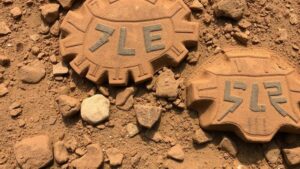Metal Detecting in Abandoned Industrial Parks for Unique Finds
Metal Detecting in Abandoned Industrial Parks for Unique Finds
Metal detecting has grown from a hobby to a fascination for many enthusiasts worldwide. Among various locations, abandoned industrial parks have emerged as treasure troves for unique finds. These derelict sites, often rich in history, provide metal detecting enthusiasts the chance to uncover artifacts that tell the story of bygone eras. This article will delve into the intricacies of metal detecting in abandoned industrial parks, explore tips for success, and highlight potential risks to keep in mind.
The Allure of Abandoned Industrial Parks
Abandoned industrial parks carry a unique charm that appeals to adventurers and historians alike. These locations often contain remnants of machines, tools, and other materials that reflect the ingenuity and craftsmanship of past industries. Factors contributing to their allure include:
- Historical Significance: Many industrial parks date back to the late 19th and early 20th centuries, often housing industries crucial to a region’s economic development.
- Potential for Unique Finds: Items such as old coins, machinery parts, and personal artifacts can provide insight into the lives of those who worked in these environments.
- Under-explored Areas: Unlike residential properties, industrial parks are often overlooked and remain largely unexplored, offering fresh opportunities for discovery.
Essential Gear for Metal Detecting
To maximize success when metal detecting in abandoned industrial parks, it is vital to arm yourself with the proper equipment. Here’s a guide to the essential gear:
- Metal Detector: A quality metal detector designed for relic hunting is crucial. Models such as the Garrett AT Pro or Minelab Equinox offer features like discrimination and depth measuring, which are beneficial in industrial terrains.
- Digging Tools: A sturdy digging tool such as a trowel or a specialized digging knife is necessary for excavating targets under hard surfaces.
- Headphones: Using headphones can help you hear faint signals that may be missed otherwise, especially in noisy environments.
- Measuring Tools: Tape measures or markers can assist in keeping track of finds and their locations for potential future excavation or research.
Techniques for Successful Hunting
Finding unique items in an abandoned industrial park is not merely a matter of detection; effective techniques can significantly improve your yield. Here are tailored methodologies:
- Sweeping Techniques: Employ overlapping sweeps with your metal detector to ensure you cover maximum ground. Slower sweeps can yield better results, as many smaller targets may be missed at faster speeds.
- Target Identification: Use the discrimination settings on your metal detector to filter out unwanted metallic signals, focusing on frequencies indicative of relics.
- Site Research: Prior to hunting, conduct research on the specific industries that once occupied the park. Understanding the types of objects likely left behind increases your chances of finding valuable items.
Legal and Ethical Considerations
Before embarking on a metal detecting adventure, it’s crucial to ensure that you comply with local laws. Some factors to consider include:
- Permission: Always seek permission from property owners or relevant authorities before starting your hunt. Trespassing can lead to legal repercussions.
- Preservation Ethics: Take care to preserve significant finds and report any notable historical items to local historical societies. This helps maintain the integrity of the site.
- Detectorist Code of Conduct: Follow the ethical guidelines of metal detecting that stress respect for the environment and historical preservation.
Case Studies: Memorable Finds
Numerous metal detecting enthusiasts have shared their discoveries from abandoned industrial parks. Here are a couple of notable examples:
- Brooklyn Navy Yard: A detectorist found an array of WWII-era tools and personal items, including a soldier’s dog tag, which provided a fascinating glimpse into the life and experiences of servicemen.
- Old Textile Mill in Massachusetts: Another enthusiast discovered a collection of antique coins and machinery parts, revealing both economic and cultural aspects of the once-thriving textile industry in the region.
Actionable Takeaways
If you are inspired to explore metal detecting in abandoned industrial parks, consider the following actionable takeaways:
- Conduct thorough research on the history of the site to identify the most promising areas for searching.
- Equip yourself with high-quality metal detectors and digging tools tailored to industrial terrains.
- Respect legal boundaries and ethical considerations to ensure a positive experience for both yourself and future detectorists.
Metal detecting in abandoned industrial parks can lead to unique finds that offer a window into history. With the right preparation and respect for the site, enthusiasts can uncover artifacts that narrate the stories of past generations.

